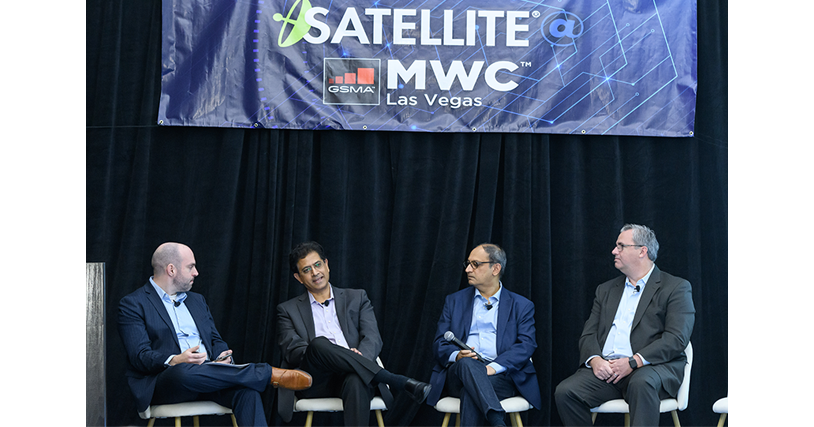“Complementary Convergence” is a Major Topic at MWC

The Mobile World Congress (MWC) event series focuses on terrestrial systems with mobile operators, vendors, and equipment and device manufacturers in attendance. This year’s event in Las Vegas, NV was the first time industry leaders from the SATELLITE Conference & Exhibition were invited to participate. Why the big change? Telco operators and others in the terrestrial ecosystem are eager to discuss building hybrid terrestrial and satellite networks to provide connectivity around the world. This “complementary convergence” between terrestrial and satellite systems was a running theme throughout the show.
In addition to the growing excitement around hybrid networks and direct-to-device satellite connectivity, there is a deep desire to understand what’s possible. My panel session on “Satellite-Terrestrial Hybrid Networks: The World’s Fastest and Most Cost-Effective Road to 5G” highlighted how satellite can complement terrestrial networks and extend applications to places beyond terrestrial connectivity. Such a convergence widens the reach of wireless services, which can be essential for commercial enterprises as well as government agencies to support infrastructure and services in both high and low population density regions.
A poll taken by the panel moderator, Jeffrey Hill, Executive Editor of Via Satellite magazine and chair of the annual SATELLITE Conference, showed that most attendees for the satellite sessions were from the terrestrial sector. Consequently, they were highly engaged and keen to learn about low earth orbit (LEO) vs geostationary orbit (GEO) satellites, ground network innovations and application use cases in hybrid networks. With recent announcements about direct-to-device satellite service for emergency use, and the standardization of NTN in 3GPP Release 17, hybrid networks are fast becoming a reality.
Another hot topic at the event was the emergence and importance of private LTE/5G networks. Potential applications include smart factories, transportation, precision farming, multi-tenant buildings, financial market networks and private campus networks. Big Tech companies like Microsoft, Amazon and others are actively developing cloud hosted and highly secure solutions for the cellular core network and providing interfaces to enterprise IT organizations to expand their footprints beyond Wi-Fi based connectivity with LTE/5G private networks. Of course, so is Hughes, as we lead the design, integration and implementation of secure standalone 5G networks for the U.S. DoD. With 5G’s network slicing capability—which allows operators to logically (as opposed to physically) carve out their network capacity and guarantee service level agreements (SLAs)—telcos are exploring this as a huge business opportunity to meet enterprise demand for SLAs that 4G/LTE cannot guarantee. Integrating GEO and LEO satellite connectivity for global reach, backhaul, back-up and resiliency puts Hughes at the front of the pack when it comes to these private 5G deployments.
It's refreshing to see the telco and Big Tech companies take a closer look at the power of satellite connectivity to enhance and extend 5G networks, underpinning the complementary convergence of terrestrial and satellite capabilities. I look forward to having more discussions like these at future MWC events, at the SATELLITE 2023 Conference & Exhibition and elsewhere as the mobile world and the satellite world work together to advance connectivity everywhere.